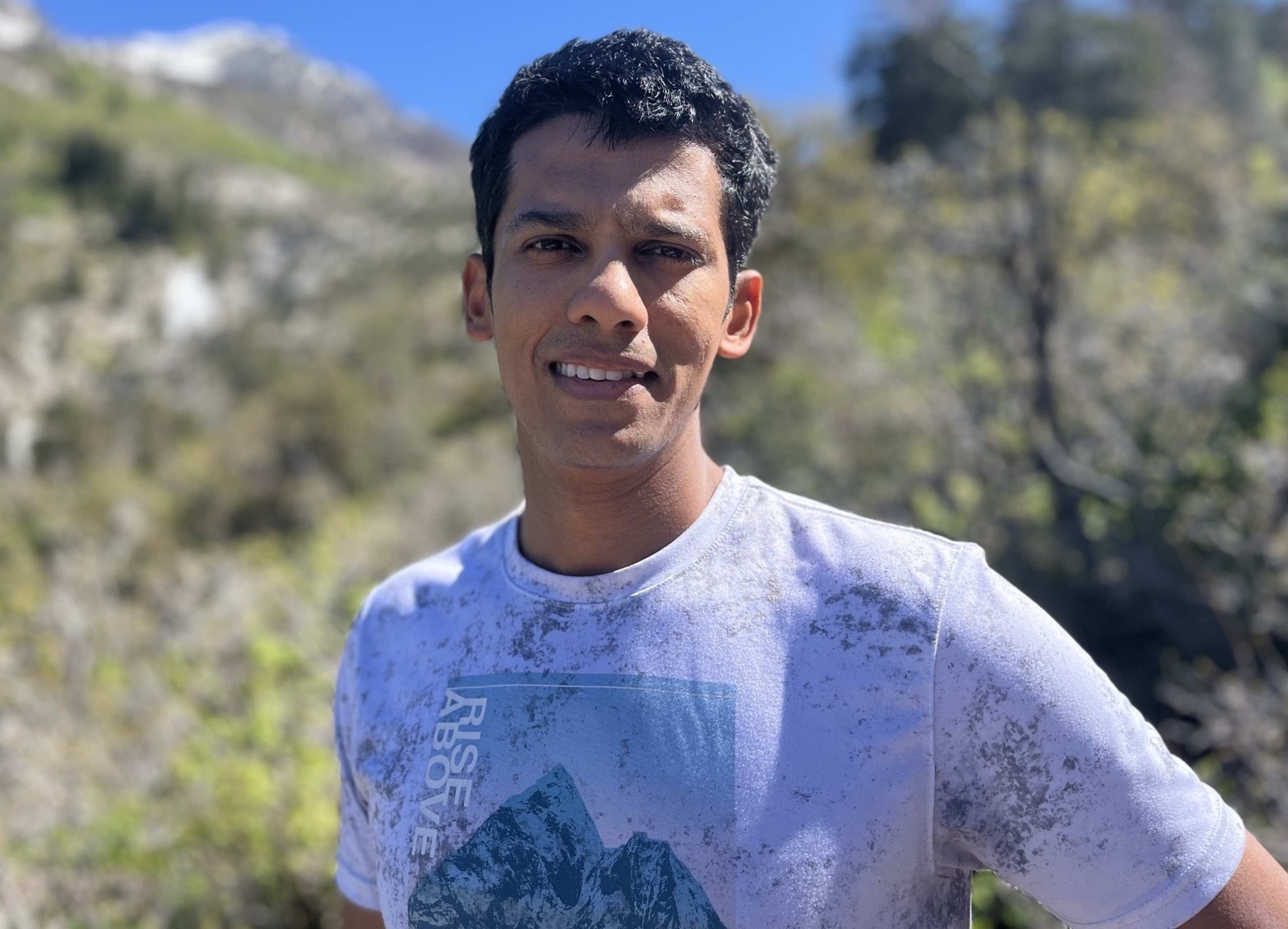
A researcher leads a team developing an ambitious new tool for understanding storm clouds
On most days you will find atmospheric scientist Fiaz (fah-yahz) Ahmed in his home office in Salt Lake City, Utah, where he works remotely as an assistant researcher at the University of California, Los Angeles (UCLA).
His chief investigations involve the hard-to-model processes of deep convection. This kind of storm activity occurs when moist parcels of turbulent warm air move from the lower to the upper atmosphere. Such vertical transport of heat and energy, capped by towering cumulonimbus clouds, can set the stage for massive amounts of rain.
Ultimately, convection is a way to transport the excess heat that builds up near Earth’s surface into the atmosphere. Convective storms also have remote effects, says Ahmed. “They can influence weather patterns quite far away from the center of the action.”
His specialty is deep convection in the tropics, the hot and water-laden equatorial regions where increased precipitation and extreme events in a warming world are most evident.
The complexity of controlling factors behind deep convection makes it difficult to simulate in climate and weather models.
To confront that challenge, Ahmed is leading a multi-institution team of researchers in a 2022-2025 project sponsored by the Atmospheric System Research (ASR) program at the U.S. Department of Energy (DOE).
Unifying Causes
“I very quickly found out I wasn’t interested in engineering. I would have ended up in a plant. I started looking around for alternative pathways.”
– Fiaz Ahmed
The team must consider a medley of complex atmospheric influences on deep convection. Foremost among these are thermodynamic factors, which modify temperature and water vapor distribution in the atmosphere, making it harder or easier for deep convection to happen.
Another complexity involves aerosols, the tiny particles of water, liquids, and solids that make clouds and precipitation possible.
Deep convection is also impacted by non-thermodynamic effects, which Ahmed describes as “things that don’t directly change the atmosphere’s temperature or moisture distribution but can nonetheless encourage or discourage convection.”
They include orography (mountainous terrain), converging sea breezes (which influence cloud formation), and wind shear ─ which occurs when sharply different wind speeds or directions in the upper troposphere clash with those closer to the surface.
Ahmed and his team are developing a framework that assesses the relative influence of deep convection’s clashing thermodynamic, aerosol, and non-thermodynamic factors over large-scale regions of the atmosphere.
The team’s “precipitation-buoyancy framework” will use a single metric to constrain (that is, more precisely define) the multiple influences behind deep convection.
A similar buoyancy framework has been tried before using tropical data. But the framework Ahmed and his partners are developing, they say, offers not only a single metric but is also derived from data across a wider range of environments: tropical, subtropical (farther from the equator), oceanic, and continental.
‘A Fundamental Theory’
Ahmed’s team for the ASR work represents many institutions and research interests. He shares the duties of principal investigator (PI) with J. David Neelin of UCLA, a long-time student of the timing of dynamic influences on convection, and convection researcher Kathleen Schiro at the University of Virginia, who worked on radar observations from GoAmazon.
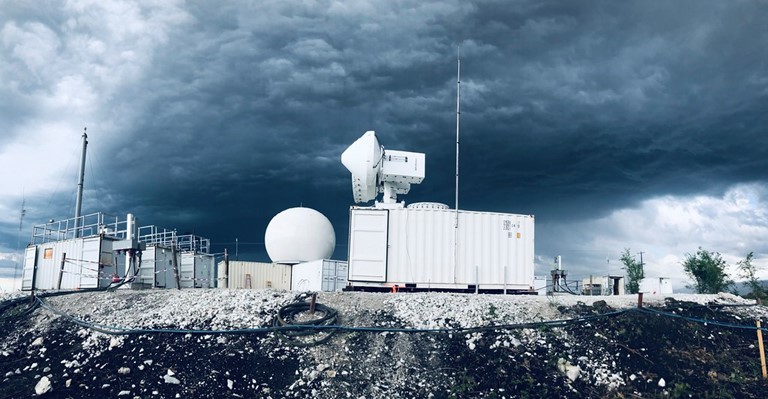
Schiro’s part in the project relates to understanding the environmental influences on deep convection, with an emphasis on mesoscale (regional scale) deep convective systems.
The project’s co-investigator is UCLA’s Rong Fu, an expert in the impact of aerosols on deep convection. Her role is to disentangle the influence of aerosols and thermodynamics.
Lastly, modelers Shaocheng Xie of Lawrence Livermore National Laboratory and Scott Giangrande of Brookhaven National Laboratory are the project’s designated “collaborators.”
The team is working to constrain and expand what Ahmed calls “the theory of how convection works,” from observations of precipitation and water vapor.
“Precipitation is well observed from remote sensing data and ground instruments,” he says. “But there are other pivotal measures that control climate and weather and are not so well observed.”
Latent heat, for example. It is released by precipitation when vapor condenses into water and water condenses into ice.
Convection, says Ahmed, “is driven by the temperature differences between the surface and the air. However, water vapor is an important throttle. It decides the frequency and intensity of convection.”
The Right Sites and Campaigns
The ASR project requires a wide range of observational data. Ahmed and his team are using measurements from field campaigns and long-term observatories funded by the DOE’s Atmospheric Radiation Measurement (ARM) user facility.
Some data are from three ARM field campaigns representing several deep-convection environments.
A campaign called Observations and Modeling of the Green Ocean Amazon (GoAmazon 2014/15) collected observational data from a part of Brazil’s Amazon Basin, where pristine air intersects with aerosol influences from urban industry.
The 2018─-2019 Cloud, Aerosol, and Complex Terrain Interactions (CACTI) field campaign took place in Argentina’s Sierras de Córdoba mountain range, a region of the Andes Mountains that experiences some of the largest thunderstorms in the world.
ARM’s Tracking Aerosol Convection Interactions Experiment (TRACER) unfolded in and around coastal Houston, Texas, where convective storms boil up in a mixed environment with sea, rural land, and city influences.
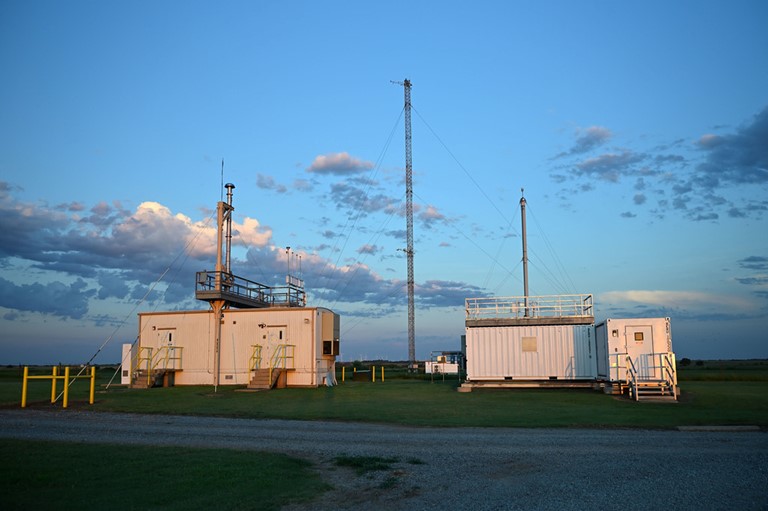
In addition, Ahmed is using long-term continuous data from two of ARM’s three fixed-location atmospheric observatories: the Southern Great Plains (SGP) site in Oklahoma (1992 to present) and its now-closed oceanic, multi-site Tropical Western Pacific (TWP) observatory (1996 to 2014).
‘One Other Factor’
GoAmazon 2014/15 inspired the idea of a buoyancy framework. But before then, scientists knew that precipitation and water vapor are tightly related.
Fast forward to the present, however, and “we noticed that if you look at the precipitation-water vapor relationship in different regions of the tropics, you get slightly different looking (data) curves,” says Ahmed. “The implication was there is at least one other factor varying between these regions that needs to be accounted for.”
That turned out to be a measure of buoyancy that a cloud experiences, he says. It’s a way to account for the effect of water vapor as well as the temperature differential caused by surface heating.
So far, the ASR-funded team has developed the buoyancy framework based on tropical ocean regions, says Ahmed. “The ARM observations provide the opportunity to test the framework further over land. We think it’s a more general relationship that should hold in other environments.”
TWP sets a baseline reference of continuous, long-term data. (“We can get good statistics out of it,” says Ahmed.) Then, over land, CACTI (mountains) and TRACER (coastal environments) provide extra datasets to test the buoyancy framework “in a variety of regions,” he says, including how it performs with the strong day-night diurnal cycle evident over land.
A Tool Within a Model
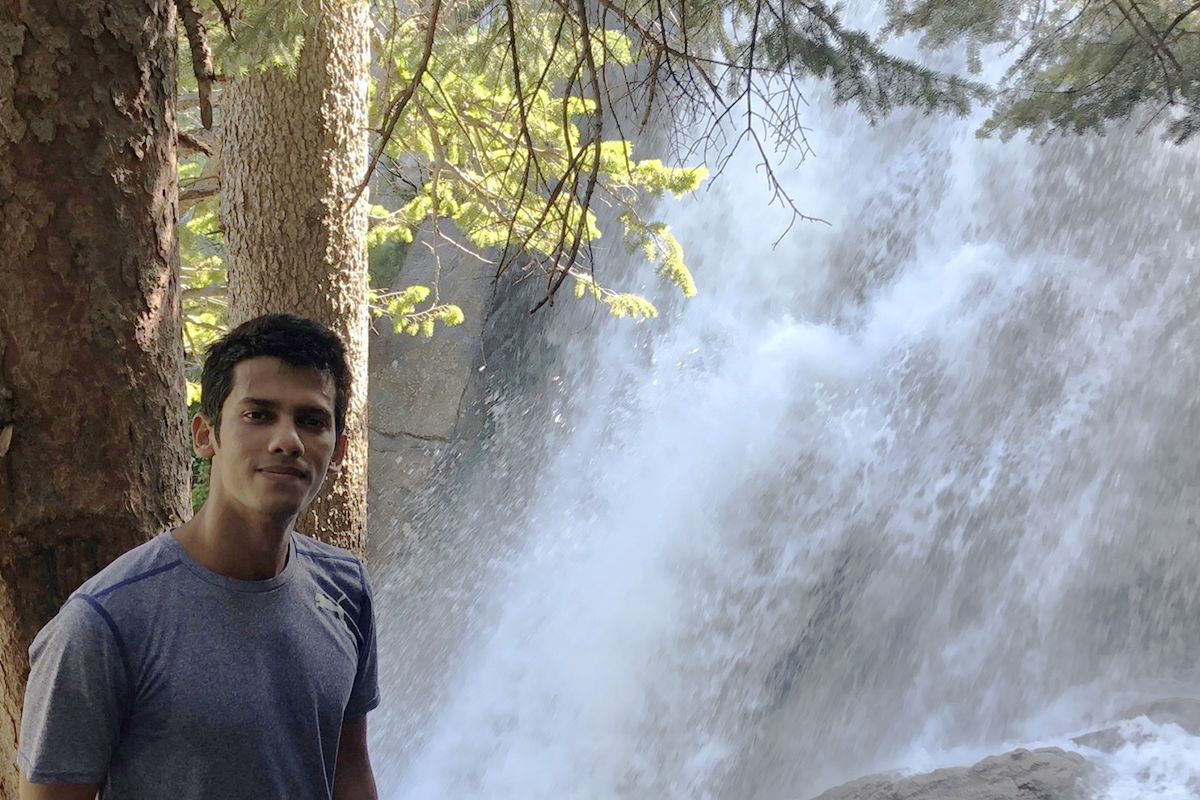
The framework underway in the ASR project is not a model but “a tool within a model,” says Ahmed.
It will be used to diagnose climate models, and eventually integrated into the ARM model diagnostics package. There, among other things, it will give modelers a way to calculate the dependence of deep convection on its regional environments.
“If you have access to (data on) temperature profiles and water vapor profiles and precipitation” to inform the framework, he says, “it could give a modeler a way of adjusting a model’s acuity.”
The framework can be equally valuable in simple, laptop-scale models that do not require a lot of computing power, and models large enough “to gain a conceptual understanding” of an atmospheric process, says Ahmed, whose team has experimentally “successfully applied this framework.”
The ASR project was foreshadowed in several papers Ahmed was part of: in 2018 (a land and ocean look at the tropical moisture-precipitation relationship), 2020 (on the precipitation-buoyancy relationship), and 2021 (a study of buoyancy evolution).
Other Pursuits
Like any other university atmospheric scientist, Ahmed has multiple research projects going at once.
For one, he has an abiding interest in large-scale tropical dynamics, comprised of phenomena that can unfold over tens of thousands of kilometers and days or weeks.
One such phenomenon is the Madden-Julian Oscillation (MJO), a slow-moving eastward bulge of clouds, rain, and winds that periodically traverse the topics before rebounding. It can enhance or suppress rainfall.
Another is the Intertropical Convergence Zone (ITCZ), a band of equatorial clouds and rain driven by trade winds that can generate small-scale but intense convection and heavy rainfall.
In some cases, Ahmed employs a laptop version of a model to get a theoretical understanding of the MJO and ITCZ.
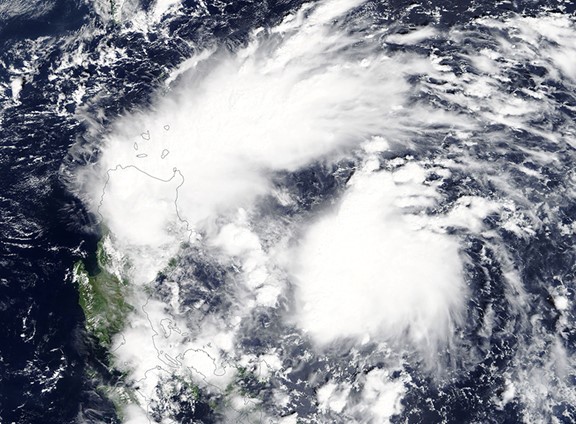
“The nice thing is, you can use the same set of equations,” he says, to study deep convection or, with a few tweaks, these large-scale phenomena. “Fundamentally, they are all expressions of (how the atmosphere is) fluid.”
Ahmed led a 2021 paper on moisture gradients in the MJO.
And a 2023 study of the ITCZ, coauthored with Neelin and Schiro and in part funded by ASR, used a simple atmosphere-only model to identify interconnected processes in a climate-model uncertainty: Will the large band of rain in the Earth’s tropics shrink or expand in a warming world?
Convection Up Close
Years before he set his mind to study convection, Ahmed experienced its effects.
In India, he says, epic monsoon rains “are part of the zeitgeist.”
In 2007, Ahmed started university at the National Institute of Technology Karnataka (B. Tech, chemical engineering, 2011). The campus is in Surathkal, India, on the shores of the Arabian Sea in coastal Karnataka state.
There are four seasons in this region. The longest is the monsoon season, from June through September, when most of a year’s precipitation falls to Earth in heavy sheets. Surathkal averages 143 inches of rainfall a year. That’s almost four times more than the rest of the state.
“Before I took a single course in atmospheric science or met any of my group members, I was on a plane and in the middle of this field campaign. Trial by fire, I guess.”
– Fiaz Ahmed
So, Ahmed knows rainfall.
He also knows its origins in tropical convection, owing to doctoral studies at Texas A&M University (PhD, atmospheric sciences, 2016). Ahmed’s first paper, published in 2015, used ground radar and satellite data to mathematically refine what we know of the relationship between a column of moist air and average surface precipitation.
Ahmed, who grew up in Bangalore, says he had no childhood ambition to be one kind of a scientist or another, though “I was a curious kid, and my parents encouraged me to ask questions.”
His father is an engineer, and his mother is “a stay-at-home mom,” he says, but so intensely curious “that in a different world she could have been an academic herself.”
That said, in India, students inclined towards mathematics (as he was) tend to go into engineering.
Then, at university, says Ahmed, “I very quickly found out I wasn’t interested in engineering. I would have ended up in a plant. I started looking around for alternative pathways.”
Then came a book by James Gleick called Chaos: Making a New Science (2008). Reading it in his junior year, Ahmed learned of meteorologist Edward Lorenz and the “butterfly effect,” the notion that even small changes in nature can have huge consequences.
Fluid Equations
At that point in his life, Ahmed had been studying fluid equations in chemical engineering, including those that calculate how much water and other fluids can flow through a pipe.
He began to see the climate system could be governed by the same fluid equations, based on the flow of fluids in atmospheric phenomena.
“That got me hooked on the idea that you could use fluid equations to study weather and climate,” says Ahmed.
From there, he did an internship at the Indian Institute of Tropical Meteorology on monsoons in India. “That internship really crystallized things for me.”
At Texas A&M, Ahmed studied with ARM and ASR veteran Courtney Schumacher, his eventual dissertation advisor.
“She was kind enough to take a chance on me,” says Ahmad, who brought a background in fluid dynamics and thermodynamics and an interest in tropical climate.
“Before I took a single course in atmospheric science or met any of my group members,” he recalls, “I was on a plane and in the middle of this field campaign. Trial by fire, I guess.”
The Big Picture
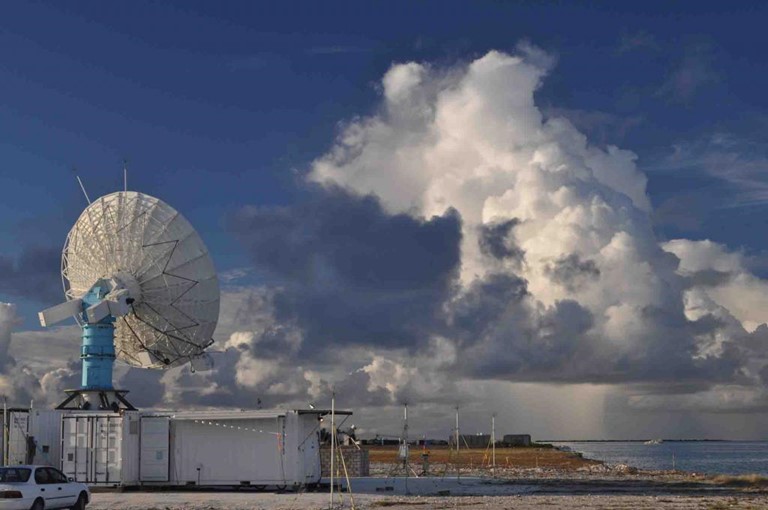
That campaign, AMIE/DYNAMO, was actually two that shared a timeframe and location: 2011-2012 Dynamics of the Madden-Julian Oscillation (DYNAMO) and the ARM Madden-Julian Oscillation Experiment (AMIE).
Ahmed spent 45 days on Addu Atoll in the Maldives, where he helped maintain a truck-mounted radar and the truck itself.
“I met a lot of passionate scientists,” he says, and gained an enthusiasm that boosted his graduate career and lasted all four years of his PhD work. Ahmed also witnessed an ambitious tropical field campaign.
“I was able to connect my courses to a big picture,” he says.
Ahmed’s dissertation on the three-dimensional structure of precipitation features, reported in a 2016 paper, rose out of DYNAMO data.
“I was playing with it,” he says, and found that precipitation and water vapor relationships could be stratified by cloud type and by land vs. ocean.
Ahmed’s first project as a postdoc at UCLA explored these land-ocean differences. In turn, this work led to the buoyancy project for ASR, which “I can trace all the way back to my PhD.,” he says. “A lot of my research projects try to answer a question I previously encountered.”
At home, a measure of buoyancy and storm-like energy is required. He and his wife Arti Munshi, a marketing analyst, have two daughters. Zara is age 3 and Mira is 8 months old.
Ahmed likes to hike and climb, though he will not do technical climbing.
“We have started a family,” he explains. “It’s critical I live.”
# # #Author: Corydon Ireland, Staff Writer, Pacific Northwest National Laboratory
This work was supported by the U.S. Department of Energy’s Office of Science, through the Biological and Environmental Research program as part of the Atmospheric System Research program.

